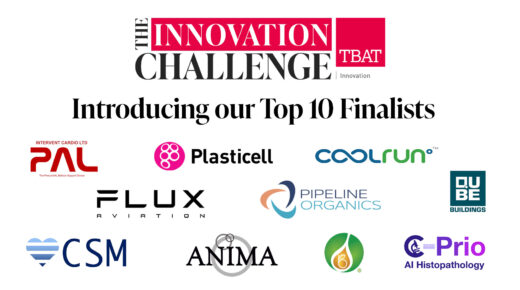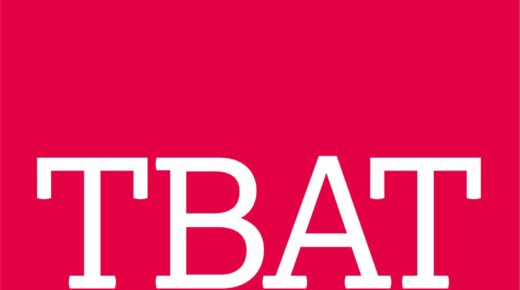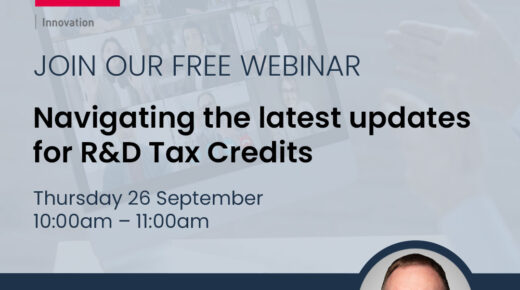The R&D Tax Relief Scheme is, in essence, a form of non-competitive government funding delivered through the taxation system. It offers significant financial incentives to businesses spending money on eligible R&D activities. Understanding who can claim and what activities qualify for R&D tax can often be quite complex. This blog aims to shed some light on these aspects, making it easier for businesses to navigate the R&D tax relief landscape with greater confidence.
The definition of R&D for tax purposes is different to conventional R&D definitions in that the latter solely focuses on innovation, advancement and improvements. The definition of R&D for tax purposes also requires an advance, however, eligibility rests on the presence of scientific or technological uncertainty. Without uncertainty, there is no R&D. Therefore, all the activities (and associated costs) which directly contribute to achieving the advance through the resolution of scientific or technological uncertainty are eligible for R&D tax.
Here are some key criteria and examples of qualifying activities:
1. Advancing Science or Technology
For starters, the project must aim to make an advance in overall knowledge or capability within a field of science or technology. In essence, this means resolving uncertainties that could not be easily resolved by other professionals working in the field, or, resolving uncertainties where there was no readily available information to enable you to easily resolve it. In doing this, the project is demonstrably seeking to push the boundaries of existing knowledge or capability within your sector.
This extension of knowledge or capability usually results in the development of a new product or process which is usually ‘better’ than the original.
Examples:
Company A is seeking to mass print on a new type of food packaging which is made of biodegradable algae substrate that hasn’t been printed on before. The advance is an extension of knowledge, particularly, technical know-how of printing on novel substrates and the extension of capability is the development of an advanced printing process.
Company B is seeking to develop an advanced thermal material to contain the temperatures of electric vehicle battery systems in the event of them catching fire, therefore, reducing the risk of thermal runaway. These regulations are new and are due to be implemented across the automotive industry in the future. The advance is an extension of knowledge and capability as it will result in the creation of a new advanced material that is capable of meeting strict safety standards.
2. Resolving Uncertainties
The project should contain scientific or technological doubt about how to resolve the uncertainty. The solution to overcome the uncertainty should not be readily available in the public domain and a competent professional working in the field should not be able to readily resolve it. The main aim of the R&D work is to find out whether the solution is feasible or figure out how it can be done.
Using the examples above, Company A is seeking to print on a brand-new, biodegradable type of food packaging that is made up of algae-based polymers. As this is a new type of substrate that has not yet been printed on, there is little readily available data about how the ink will react to it in terms of ink absorption and drying. Therefore, it is technologically uncertain how to achieve a high-quality, replicable print on the substrates due to differences in chemical composition compared to conventional paper or plastic. R&D is needed to explore feasibility and gather more data around the mechanical strength of the material during print processing and ink absorption and drying
Company B, on the other hand, is required to create a material solution that is capable of withstanding extreme temperatures within an electric vehicle battery system. The uncertainty is that the properties required to achieve such a material solution are not currently available with existing materials. R&D is, therefore, necessary to address this knowledge gap and explore the feasibility of developing a solution.
3. Innovative Development
In order to be eligible R&D, The work must seek to advance existing knowledge or capability to the point where the output is ‘better’ than the original. Routine updates or optimisations to existing products and processes do not qualify unless they materially affect the underlying technology.
Examples:
Product Development: Overcoming technological uncertainty to develop a new type of medical device that provides more accurate readings than current devices.
Improved Production Techniques: Overcoming technological uncertainty to create a novel method for producing composite parts that results in quicker processing times or reduces the environmental impact significantly.
4. Systematic and Investigative Work
Qualifying R&D activities must follow a systematic and investigative approach. This involves planning, testing, and evaluating the progress and results of the project. The technical write up for the R&D tax claim should be well-documented, detailing the hypothesis, methodology, and findings.
Examples:
Developing Prototypes or Models: Creating and testing prototypes to resolve technical issues or to validate the functionality of new designs.
Conducting Scientific Research or Trials: Laboratory-based experiments or field trials aimed at gathering data to resolve specific scientific or technological uncertainties.
The eligibility criteria for R&D tax relief are designed to be inclusive, enabling a wide range of companies to benefit. Here are the main factors determining eligibility:
1. Company Structure
R&D tax relief is available to companies subject to UK Corporation Tax. This includes:
Small and Medium-sized Enterprises (SMEs): Defined as companies with fewer than 500 employees and either an annual turnover under €100 million or a balance sheet total under €86 million.
Large Companies: Companies that don’t meet the SME criteria can claim through the Research and Development Expenditure Credit (RDEC) scheme, which offers relief as a credit against their tax liability.
It is important to note, that any companies looking to make an R&D tax claim with accounting periods beginning on or after 1st April 2024 will no longer be able to claim under the SME or RDEC Schemes. Instead, companies will claim under the merged scheme
2. Type of Work Conducted
As stated in the R&D tax guidelines, it is the activities which directly contribute to achieving the advance in science or technology through the resolution of scientific or technological uncertainty that are R&D. This includes work carried out by employees, contractors, or externally funded/subsidised projects. Even if the project does not achieve its objectives, the effort and expenditure can still qualify for R&D tax relief.
3. Expenditure Incurred
Qualifying expenditures for R&D tax relief include:
Staffing Costs: Salaries, wages, pensions, and national insurance contributions for staff directly involved in R&D activities.
Consumables: Any materials consumed or transformed as part of the R&D process, such as chemicals for experiments or power used in testing machinery.
Software: Costs for software used directly in R&D activities, such as specialised engineering or design software.
Subcontractor Costs: For SMEs, the cost of subcontracting R&D work to another company or individuals. For RDEC costs paid to a charity, higher education institute, scientific research organisation, health service body, an individual or partnership of individuals, are eligible to be recovered, providing the costs are for relevant independent R&D.
Payments to Clinical Trial Volunteers: For companies in the pharmaceutical or biotechnology sectors, payments to volunteers participating in clinical trials.
The process of claiming R&D tax relief involves compiling detailed documentation of your projects and expenditures, then submitting this information through your Company Tax Return (CT600). It’s advisable to work with a tax advisor or R&D tax specialists, such as TBAT Innovation, to ensure your claim is robust and legitimate. Here are the steps involved:
Identify and Qualify the Projects: Review your projects to identify those that meet the criteria for R&D tax relief. It is vital that you speak with a professional when determining the eligibility of a project as this could be costly later down the line, if you get it wrong!
Document Your R&D Activities: Maintain comprehensive records of the work done, including project plans, project charts, drawings, designs, test results, photos of prototypes, minutes of meetings, email exchanges, any other relevant records that evidence R&D.
Calculate Qualifying Expenditure: Gather financial records to determine eligible R&D costs. It is important to record the claim methodology, any use of sampling and the methods used to arrive at any other estimated or apportioned R&D expenditure figures.
Submit AIF and File CT600: As of August 2023, all R&D tax claims need to be submitted digitally using the HMRC Additional Information Form (AIF) prior to the filing of the CT600. The AIF form requires specific details relating to the technical R&D work carried out, as well as a breakdown of the expenditure for each project.
Choosing TBAT Innovation as your partner for navigating the complexities of R&D tax relief can significantly enhance your business’s innovation strategy. TBAT Innovation brings a wealth of expertise and a proven track record in securing substantial tax relief for companies across various industries. Our team of specialists understands the nuances of HMRC’s R&D criteria, ensuring that your claims are both compliant and maximised.
By leveraging our deep knowledge and experience, you can focus on what you do best—driving forward ground-breaking projects— leaving us to handle the intricate details of the claim process, ultimately boosting your cash flow and reinvesting in future innovations.
R&D tax relief is a fantastic government incentive designed to encourage innovation by offering tax breaks to companies who are engaged in qualifying R&D activities. The allure of R&D tax relief lies in its ability to alleviate the financial burdens associated with innovation. Whether you’re developing new products, processes, or services, the scheme provides a financial boost by reducing your corporation tax liability or offering cash credits for eligible R&D expenditure.
If your company is involved in advancing science or technology, it’s worth exploring how R&D tax relief can benefit you.
For tailored advice and assistance with your R&D tax relief claim, consider booking an appointment with our R&D Tax team to ensure you fully capitalise on this valuable incentive. Whether you are a small start-up pushing the boundaries of your industry or a large corporation undertaking substantial research projects, R&D tax relief can provide crucial financial support for your innovative efforts.

Author: TBAT Innovation
Date: 6 September 2024
The Innovation Challenge proudly presented by TBAT Innovation with headline sponsor Shakespeare Martineau has been expertly crafted by our team to stimulate innovation within SMEs. The Innovation Challenge 2024 has attracted a wide array of ground-breaking projects from SMEs aiming to drive technological advancements, sustainability, and societal impact. As part of the program, we hosted four intensive workshops, … Continued
Author: TBAT Innovation
Date: 6 September 2024
Thursday 7th November – 10:00am – 11:00am (GMT) Join TBAT Innovation for this insightful webinar with our expert Esther Lawrence, Head of Business Development (Grants) where we’ll look at the funding opportunities available for UK businesses, and how to utilise the schemes such as Innovate UK Grant Funding. Innovation is inherently risky, making UK Government … Continued
Author: TBAT Innovation
Date: 22 July 2024
Thursday 26th September 10:00am – 11:00am ONLINE Join TBAT Innovation for this insightful webinar with our expert Ian Davie, Senior Consultant, where he will delve into the dynamic landscape of R&D Tax Credits. In this free 1-hour webinar, you will discover the latest updates, key strategies , and expert insights to maximise your returns. Whether … Continued